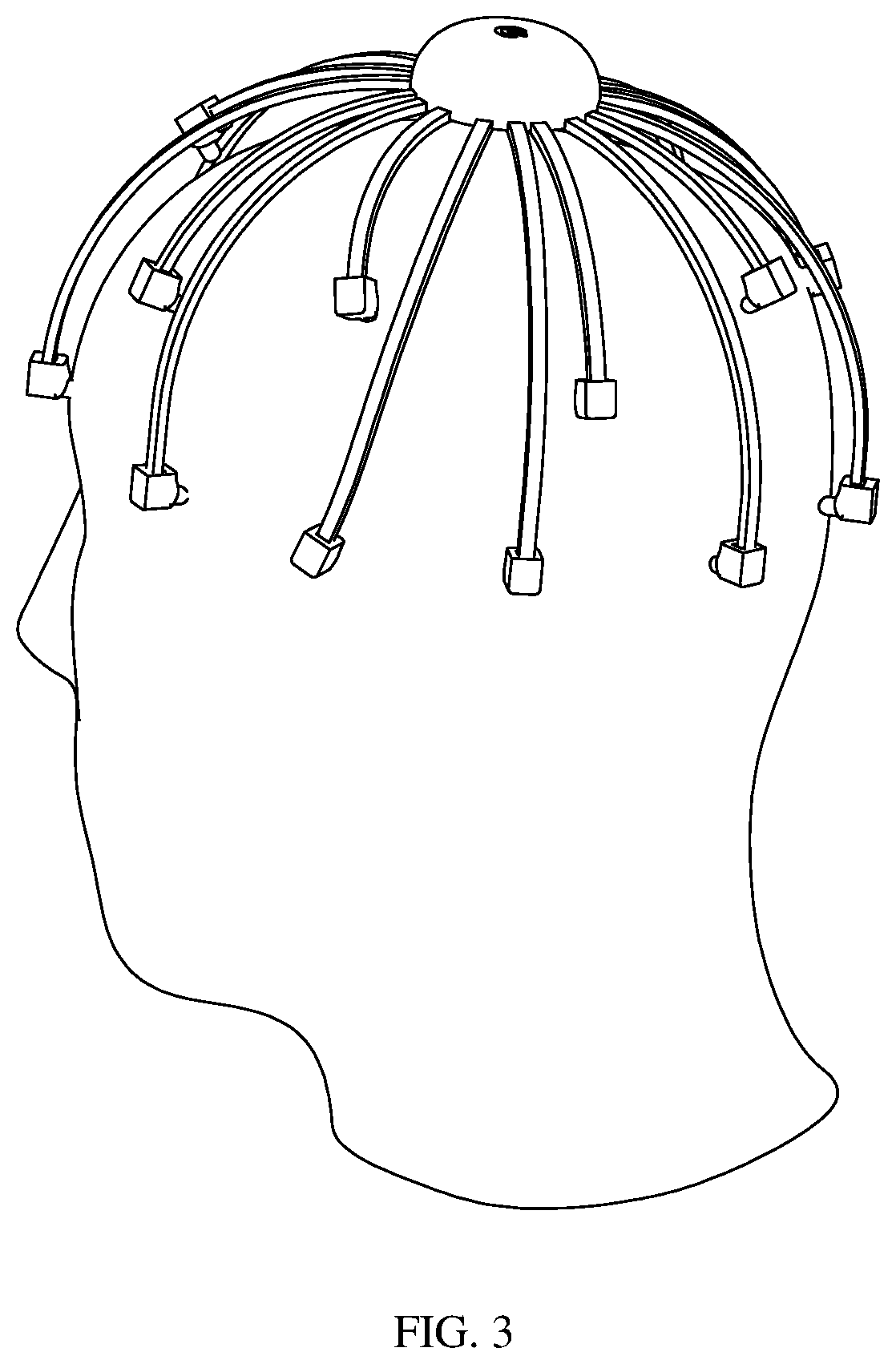Headgear for dry electroencephalogram sensors
a technology of electroencephalogram and headgear, which is applied in the direction of headwear caps, medical science, hats, etc., can solve the problems of time-consuming use of electrolytic gels, adhesives and scalp abrasion, irritating and uncomfortable subjects, etc., and achieves the effect of easy and quick slide of headgear and minimal assistance and tim
- Summary
- Abstract
- Description
- Claims
- Application Information
AI Technical Summary
Benefits of technology
Problems solved by technology
Method used
Image
Examples
Embodiment Construction
[0026]Referring to FIG. 1, an exemplary embodiment of a headgear 1 according to the invention includes a centerpiece 100, lower arms 102, sensor tips 104 and an upper arms 106. A preferred embodiment of the headgear 1 contains at least two lower arms 102 and optionally one or more upper arms 106. However, for purposes of clarity, the descriptions below will refer to each generically rather than as specific individual units since embodiments may have multiple, similar copies of each.
[0027]The centerpiece 100 provides a reference position for the entire headgear 1. In the exemplary embodiment shown in FIG. 1, the centerpiece 100 is a dome with sufficient interior volume to house the electronics for the headgear 1. The centerpiece is an ideal location for placing electronic components for sensing neurological signals, such as amplifiers, microprocessors, wireless transceivers and control buttons since it is equidistant from all peripheral sensor points and facilitates easy access by th...
PUM
 Login to View More
Login to View More Abstract
Description
Claims
Application Information
 Login to View More
Login to View More - R&D
- Intellectual Property
- Life Sciences
- Materials
- Tech Scout
- Unparalleled Data Quality
- Higher Quality Content
- 60% Fewer Hallucinations
Browse by: Latest US Patents, China's latest patents, Technical Efficacy Thesaurus, Application Domain, Technology Topic, Popular Technical Reports.
© 2025 PatSnap. All rights reserved.Legal|Privacy policy|Modern Slavery Act Transparency Statement|Sitemap|About US| Contact US: help@patsnap.com



